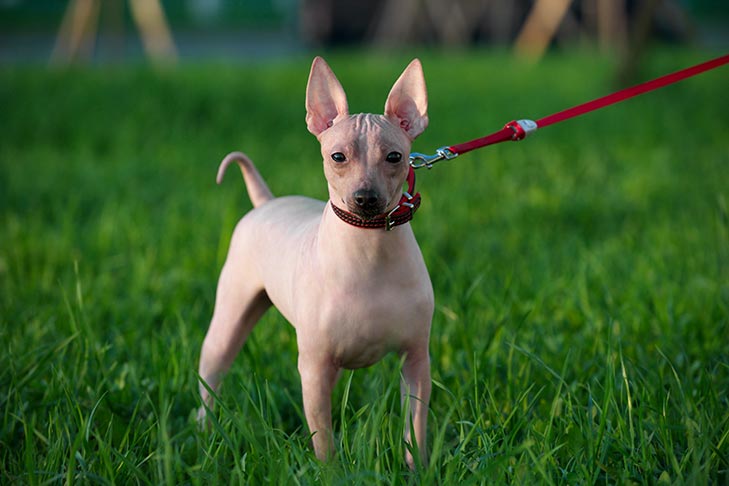|
Sharing your life with a dog is a special experience. After all, they’re adorable, perceptive, and provide unconditional love. In fact, having a dog in the home can provide many benefits to kids in particular, such as greater compassion and self-esteem.
But how do dogs affect our health? Recent research has shown that children exposed to dogs may have a lower risk of asthma. And surprisingly, dog exposure before the age of one might protect against future allergies. But what if you suspect you already have an allergy to dogs? Perhaps you get a runny nose or watery eyes whenever you’re around one. Or what if you’ve already had a dog allergy diagnosed?
Well, having a dog certainly won’t relieve your symptoms. Does that mean you can never have a dog, or could a so-called “hypoallergenic” dog breed be the answer? Is there even such a thing as a “hypoallergenic” dog? Or could there be other options?

Everybody’s allergies are different, ranging from mild to severe. And there are steps you can take to minimize your exposure. Depending on your situation, you might be destined to live dog-less. However, if you take the time to do your research, get proper allergy testing, and work on keeping the allergens at bay, dog ownership could be a possibility. Read on to see if owning a dog, even if you have allergies, might be in your future.
What Causes Allergies to Dogs?
“Hypoallergenic” dog breeds are often defined as those that either don’t shed or are hairless. “Breeds in the past thought of as being ‘hypoallergenic’ are really breeds or types of dogs with minimal shedding or whose type of hair (or lack of hair) may cause less possibility to create a reaction due to the type of coat that breed has,” affirms Dr. Jerry Klein, Chief Veterinary Officer for the AKC.
But does a dog’s coat really determine the risk of an allergic reaction?
For most people with dog allergies, the dog’s fur isn’t the issue. According to Dr. Klein, it’s not necessarily the fur, but the dander, that causes allergic reactions in people. Dander is the tiny bits of skin that are shed by the dog, much like people “shed” dandruff. This dander often ends up combined with other allergens, like the proteins found in the dog’s urine, feces, and saliva.
In most breeds, shed fur can carry proteins and dander all over your house. So-called “hypoallergenic” breeds don’t have that problem. But of course, they can still cause an allergic reaction. No breed is truly allergy-safe. In fact, “hypoallergenic” dogs may produce just as many allergens as their shedding, furry cousins. And all those allergy-triggering proteins can become airborne, particularly when your dog licks themself when grooming. Dander and protein can also be directly transferred to you when you pet your dog or if your dog licks you.
So, despite their label, there is no guarantee a “hypoallergenic” dog breed won’t trigger your allergies.

What Is an Allergy Test?
If there isn’t a truly hypoallergenic dog, and you believe you may have allergies, does that mean all hope is lost? Not at all. The first step in determining if you can live with a dog is to undergo testing for allergic sensitization. Although what’s causing your allergies might seem obvious, don’t self-diagnose, because your symptoms could be unrelated to what you suspect. Plus, up to 80% of people with allergies are allergic to more than one thing. And those allergic triggers can add up. So, if you have an issue with pollen and a pet allergy, reducing exposure to the pollen might be enough to keep your dog allergy symptoms at bay.
Plus, allergy tests have come a long way. While skin prick tests and traditional blood tests both help a clinician diagnose allergies to common causes like pets, new blood tests that examine allergens on the molecular level can provide clinicians with even more information. Using a standard blood draw, allergen component testing can get extremely specific. It can pinpoint the exact allergenic proteins that may be causing your symptoms. And in terms of dog ownership, that can have a huge impact.
For example, some people are only sensitive to a dog protein called Can f 5, which is only produced by male dogs. Up to 30% of people who only have a Can f 5 sensitivity may be able to tolerate a female dog or a male dog that has been neutered. Armed with this detailed information about your allergies, you will be in a much better position to make a responsible decision about dog ownership.
Are There Dog Breeds Suitable for People Allergic to Dogs?
The real issue to consider is the severity of your allergies. If your symptoms are inconvenient but tolerable, then there is likely a place for a dog in your life. And in that case, Dr. Klein says so-called “hypoallergenic” dog breeds are likely the safer choice. These are the American Kennel Club’s recommended breeds for allergy sufferers:
- Afghan Hound.
- American Hairless Terrier.
- Bedlington Terrier.
- Bichon Frise.
- Chinese Crested.
- Coton de Tulear.
- Giant Schnauzer.
- Havanese.
- Irish Water Spaniel.
- Kerry Blue Terrier.
- Komondor.
- Lagotto Romagnolo.
- Maltese.
- Miniature Schnauzer.
- Peruvian Inca Orchid.
- Poodle.
- Portuguese Water Dog.
- Puli.
- Shih Tzu.
- Soft Coated Wheaten Terrier.
- Spanish Water Dog.
- Standard Schnauzer.
- Xoloitzcuintli.
- Yorkshire Terrier.

There is a wide range of less allergenic dog breeds, from the large, intelligent, and protective Giant Schnauzer to the tiny, calm, and hairless toy Xoloitzcuintli. Dr. Klein points out that because smaller breeds have less of everything, they will also create less dander than larger breeds. Research the available breeds and look for one that fits your lifestyle. For example, do you want a high-energy dog to participate in dog sports with, or would you prefer a quiet lap dog? It’s essential to find the right match, so in addition to coat care and dander potential, look at size, personality, activity level, trainability, and more.
Dr. Klein emphasizes that the match should be for the dog’s entire life, stating, “What no one wants is to relinquish a dog because of factors like a change in income, a change in living arrangements, or the development of an allergy by a member of the family.”
Although it’s a difficult decision, on the rare occasion that you can’t find the right match, Dr. Klein advises that it might be wiser to not acquire a dog, rather than bring one home only to relinquish it for rescue.
Tips for Choosing a Dog if You Are Allergic to Dogs
Once you’ve narrowed your choices, your job still isn’t done. Just because a breed matches your lifestyle and is considered “hypoallergenic” doesn’t mean it’s the right one for you. Since every person is an individual, every allergic response will be different.
“Where one person may have an allergic reaction to a Poodle, they may not be allergic to an American Hairless Terrier,” cautions Dr. Klein. “Only one-on-one contact experience will be the defining factor.”
Therefore, it’s important to physically interact with your chosen breed before you acquire a puppy or an adult dog. Only by petting and being near a given breed can you determine how much you will react, if at all. In addition, you might have to try several different “hypoallergenic” dog breeds as you search for your match, as one breed may produce less of a reaction than another. Dr. Klein advises first narrowing down your choices, then having the allergic person spend time with a member of each breed on the list. He also suggests doing this at different times to see if there is any significant difference in the allergic response.
“There may be one breed that stands out,” according to Dr. Klein. “Or possibly, none will make a difference.”
How Can You Reduce Dog Allergens?
Regardless of the breed you choose, once you bring your dog home, there are steps you can take to lessen the severity of your allergy symptoms. Here are a few:
- First, allergy-proof your household. Pet allergens are tiny and lightweight, so they easily stick to curtains, furniture, carpets, and bedding. Minimize those surfaces in your home. For example, use blinds rather than curtains and have hardwood or linoleum floors rather than carpets.
- Second, keep surfaces clean. Dr. Klein suggests frequent vacuuming of your floors and furniture. Consider using a machine with a high-efficiency particulate air (HEPA) filter. Also, launder any fabrics your dog comes in contact with, such as their bed, as often as you can. Keep your dog off the furniture and out of your bedroom. A home air filtration system designed to reduce allergens is also an option.
- Third, consider hygiene. Be sure to wash your hands after touching your dog to keep allergens off your skin. It’s also important to keep your dog groomed. Frequent bathing and grooming may reduce the amount of dander that accumulates. If possible, ask somebody else in the family to do the grooming, so you don’t suffer a reaction. And consider having your dog brushed outside to minimize getting additional dander in your home. Alternatively, use the services of a professional groomer.
- Finally, there are many medications available to ease allergy symptoms like itchy eyes or a stuffy nose. Consult with your doctor about suitable treatments. It may also be helpful to see an allergist for immunotherapy, which is the use of allergy shots to build tolerance to dogs over time.
Even if you have an allergy, with the use of medical intervention and the above recommendations, a dog could still become a beloved new member of your household.


